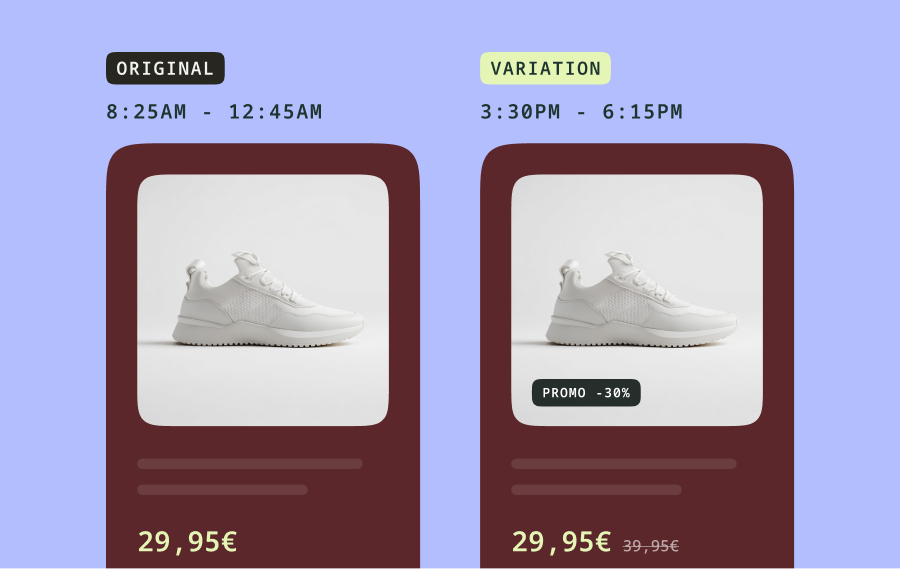Tips for conducting user research in the healthcare sector

Initiatives such as the Affordable Care Act, alongside high inflation, are heavily impacting the US healthcare sector. In the coming years, the mix of payer profit pools will continue to shift toward the government segment.
As a result, it’s more important than ever for healthcare businesses to create desirable digital experiences that capture potential customers.
Healthcare today involves a complex web of digital experiences from wearable health devices, mental well-being apps, and telemedicine, all of which play a significant role in billions of people's lives. Understanding how patients, practitioners, and administrators interact with digital tools is essential to creating systems that function and enhance outcomes.
Healthcare businesses must navigate a complex landscape of regulations, ethical considerations, and diverse user needs. The stakes are higher, too: poor design impacts commercial success and can lead to misdiagnosis, treatment delays, or compromised patient safety. Users are often under significant stress, making intuitive and accessible design even more crucial.
User research is the backbone of any website optimization program, fueling what, where, and how you prioritize your A/B testing efforts. This is never more true than in the complex healthcare sector.
Without user research, testing efforts will struggle to make an impact because the intricacy of user experiences requires first-hand, in-depth user research.
Given the specialized nature of this field, we reached out to seven leading user researchers with experience working with health and wellness brands. Their tips, which we will delve into in this article, offer invaluable guidance for anyone looking to improve their experimentation program.
1. Learn about the context for different stakeholders.
You can use various research methods to understand how individuals use digital health products. The key is to select the methods most likely to provide the information you need. For example, digital healthcare apps may be used in many settings and locations over long periods and involve many people with different needs (think patients, carers, and doctors, for starters.)
Therefore, it’s crucial to design user research that captures the experiences of different users and their context to help you better understand their needs and design A/B tests that span the entire user journey.
Confidence Udegbue explains why a mixed-method approach can generate the best results;
,
In the health industry, user research must prioritize empathy and contextual understanding. Engage users through in-depth interviews and real-time shadowing to capture the intricacies of their daily health-related experiences. Use these insights to create detailed personas and journey maps, uncovering explicit and inferred pain points. Employ mixed methods, combining qualitative interviews with quantitative surveys and usage analytics, for a comprehensive view of user behavior.Accuracy is paramount as findings impact well-being. Researchers must account for behavioral variability across demographics and conditions by integrating real-world context with data-driven insights.

Confidence Udegbue
Director & Head of Product at Freeletics
,
Odette Jansen goes on to suggest designing user research to include multiple participants so you can observe how people interact;
,
Understanding the varied target audience is crucial. This includes not only medical professionals and patients but also their families, friends, and the institutions involved. One effective strategy I've found is to bring patients and professionals together during facilitated stakeholder walkthroughs or testing sessions. This interaction provides deep insights into their relationships, knowledge, and the dynamics between them. Flexibility and creativity, such as introducing methods from game design, can make the research more effective and less intimidating, ensuring that the diverse voices are heard and understood.

Odette Jansen
Head of UX Research at Nordhealth
,
Hilary Stephenson also offers great advice for truly understanding the users' environment and context;
,
Go to the patient's home or care setting to understand their context, WiFi, and any tech or carer support. Always test products or services using people’s own assistive technology setup and devices, their configuration will be more unique than any emulation software.

Hilary Stephenson
Managing Director at Nexer Digital
,
Context and experiences also vary depending on demographic, socioeconomic, and other factors. If researchers don’t recruit diverse participants, they’re unlikely to create equitable solutions,; as Dr. Gyles Morrison explains,
,
For healthcare to be equitable, all research in healthcare must be equitable. Be it clinical trials for drug discovery or exploratory research for the latest digital health product. We need to be more radical and effective with participant recruitment to ensure we have representative samples. This means strict participant criteria and having researchers who reflect the diversity of the participants they are researching.We must also keep in mind that diversity is far more than differences in gender, ethnicity, sexuality, etc. Researchers must be conscious of the many marginalized and unheard voices, targeting participants who are the edge cases sitting at either end of a bell-shaped curve to understand their needs, wants, and limitations. When we serve these people, we can serve all people.

Dr. Gyles Morrison
Clinical UX Strategist at Clinical UX Associatio
,
Hilary provides further considerations when trying to recruit diverse participants,
,
Have people from diverse backgrounds, with ranging access needs and digital confidence levels, in any research study or co-design session. Pace the research sessions according to confidence and trust and avoid the tools of the design industry (Miro, interactive whiteboards, online meetings) if they unsettle people. Check your insights with the participants, “you said/we heard,” to validate your understanding.

Hilary Stephenson
Managing Director at Nexer Digital
,
Hilary has also shared a UX research study for primary care in the UK. It contains the research methodology, empathy, and journey maps based on the research findings. It's worth checking out.
2. Understanding domain-specific language
There’s often a big difference between how health professionals talk and a patient or consumer. It might feel like each side speaks a different language, presenting a lot of confusion and uncertainty for users.
Often, researchers who have worked in the space for some time feel they have the upper hand in understanding medical terms, but it’s essential to try to recognize that patients might not have this benefit. Through user research, you can understand where users get confused by jargon or complex processes to help you identify where to run A/B tests that improve clarity. If you’re new to conducting user research in healthcare, then Spencer Gray shares how you can prepare to engage with subject matter experts;
,
Providers have extensive knowledge of their craft, so researchers need to demonstrate humility and be honest about what they don’t know. Be flexible with your Research Guide, even when Providers give layered feedback with domain-specific information.

Spencer Gray
Senior UX Researcher at Centene
,
Alejandra Villacis Miranda also has a great tip to help you get your head around some of the complex domain-specific language and says that going in prepared can be a real benefit;
,
Get familiar with the terminology and context of the project you will be working on before talking to any Subject Matter Experts (SMEs). SMEs are patients and caregivers, not just physicians and medical staff. You can do desk research, of course but use platforms like Snomed to get familiar with healthcare terminology. Otherwise, they are forced to change their language or explain things to you, which erodes the research results. Knowing their context helps increase confidence.

Alejandra Villacis Miranda
Service Designer & Medical Market Researcher
,
3. Conduct research with empathy
It’s not only terminology that might provide hurdles to uncovering meaning. Health and wellness are highly emotive topics; as such, how and what participants say is equally important. But if you conduct research in a sterile UX lab while strictly sticking to your research questions, you’re unlikely to understand how your users genuinely feel.
Learning to conduct research with empathy means creating an environment where people feel comfortable sharing their experiences. If challenging subjects arise, avoid filling silences or removing focus from the person being interviewed.
Alejandra recommends for some training to help you be an emphatic researcher;
,
Get trauma-informed research training. When working in healthcare, a researcher needs to be particularly sensitive to the topics at hand since the emotional load can be very high, especially when talking to patients and caregivers.

Alejandra Villacis Miranda
Service Designer & Medical Market Researcher
,
Trauma-informed training helps you tackle challenging scenarios. For example, If a research participant leaves the session because they are upset, I will;
- Arrange for a co-facilitator to speak with the participant and offer additional help/resources.
- See if they would like to re-enter the session.
- Reassure any other research participants present of the actions I’m taking and acknowledge the situation.
- Reiterate that at any time, participants can ask for a break.
Spencer suggests some additional ways to show empathy;
,
Consumers may be sensitive about health, so emphasize your intent and give them space to expand on their experiences. Make them comfortable by stating that they’re free to skip sensitive questions as they see fit.For both Providers and consumers, prepare for them to passionately express their emotions – healthcare stakes can be high. Ensure participants feel heard in these moments by connecting with them on a personal level. After, carry on with a relevant Guide or unscripted question that may result in rich feedback, rather than quickly changing the subject.

Spencer Gray
Senior UX Researcher at Centene
,
4. Ethical considerations
There’s a fine line between building empathy with research participants and encroaching on privacy or ethical boundaries. For example, building rapport by asking personal questions (or offering up personal stories about yourself) may inadvertently reveal personal information.
,
Health research demands rigorous privacy and ethical considerations due to sensitive data and strict regulatory compliance.

Confidence Udegbue
Director & Head of Product at Freeletics
,
In the researcher-participant roles, a power dynamic is at play, where participants may feel compelled to divulge information. On top of this, there’s subject bias, where participants tend to act in a way they think the researcher wants them to act. To ensure you’ve minimized these biases and risks, you can;
- Give non-judgemental responses to positive and negative feedback.
- Be careful not to give your own opinions or views on the matter.
- Reduce the power imbalance by conducting the research in a location the participant chooses, wearing informal clothes, and avoiding formal language.
- Review your research questions beforehand and ensure you have a legitimate research aim for asking each question.
- Check that you are not asking participants to share any sensitive information unnecessarily.
- Tell participants if and how the session will be recorded and remind them that they can retract their consent later.
- Make participants aware of all recording devices and when they are turned on and off.
- Allow participants to give feedback after the sessions in person or via email.
5. Make sure your research is accessible.
While this tip applies to all user research, it’s more prominent in healthcare settings. What’s important to remember here is that accessibility can be impacted by a whole range of scenarios, from permanent disabilities to temporary accessibility needs. Consider the three examples below, showing permanent, temporary, and situational hearing impairments.
The above illustrates why inclusive research is so important. But what must you consider when creating a level playing field for all participants to give feedback?
Abi Hough has shared a great checklist you can use when designing your research sessions to ensure they are accessible. She’s provided a specific example to help illustrate her points;
,
Let’s consider you’re doing in-person research with a participant with sight difficulties. Pre-research• Familiarize yourself with the condition. Sight loss and visual impairment can happen at different stages of a person's life for various reasons.• Ask participants what format they’d prefer for preliminary questions or post-research information. If digital, ensure assistive technologies, like screen readers or braille readers, will work and allow responses to be inputted. If requested, can you send printed braille or large print? • If your participant isn’t using their own technology during the research, you need to replicate it as closely as possible. • Consider whether the devices and software you use for the research are compatible with assistive technology.Checking the venue • If the participant is happy to travel, make sure the venue is easily reachable using public transport. • Check the space is accessible and free of obstacles and potential hazards. • Consider the lighting, which can impact visual impairments if it’s too bright or dim. • Make sure that guide dogs and assistance/support pets are allowed.During the session • Provide an orientation of the space, describing where the exits and toilets are. • If needed, a researcher should offer to help participants navigate the space.• Communicate clearly and provide verbal descriptions of visual information relevant to the task. After the session • Ask for feedback from your participants so you can make improvements.• Keep communications open for future involvement and feedback.

Abi Hough
Director at UU3 Limited
,
Another final resource to mention here is the NHS Digital Service Manual, which is publicly available and offers great advice on accessibility, design, and user research for healthcare.
Tips to remember when conducting user research in the health and wellness sector
Understanding how diverse users interact with digital healthcare is the only way to create an A/B testing backlog of impactful hypotheses. Healthcare businesses must navigate complex regulations and ethical considerations, and poor design can have severe consequences for billions of people.
Consider using a mixed-method approach to understand the unique context experienced by various stakeholders. You can even get different stakeholders together to observe how they interact. Whatever the research method, all research should actively recruit participants who represent diverse voices.
Preparation is the key. Do your homework and be ready to engage with subject matter experts and understand domain-specific language. Also, be prepared for emotional responses and be able to show empathy. Trauma-informed research training can help here.
The research venue should be chosen to rebalance the power dynamics between researchers and participants. Conducting the research in the participants' homes (or somewhere they are familiar with) is a step towards achieving this. Consider each stage of the research and ensure you make any necessary adjustments so that it’s accessible to all participants.
Finally, ethical standards are paramount in healthcare research, and preparing ahead of time to ensure only the necessary information is requested should help minimize risks.
Use these tips to conduct effective user research that fuels experimentation and optimization efforts and leads to digital health solutions that truly enhance patient care and outcomes.
Thanks to all the expert contributors;
- Confidence Udegbue, Director & Head of Product at Freeletics.
- Alejandra Villacis Miranda, Service Designer & Medical Market Researcher.
- Odette Jansen BSc MEd, Head of UX Research at Nordhealth.
- Dr. Gyles Morrison, MBBS MSc Clinical UX Strategist at the Clinical UX Association.
- Spencer Gray, Senior UX Researcher at Centene.
- Hilary Stephenson, Managing Director at Nexer Digital.
- Abi Hough, Director at UU3 Limited.




